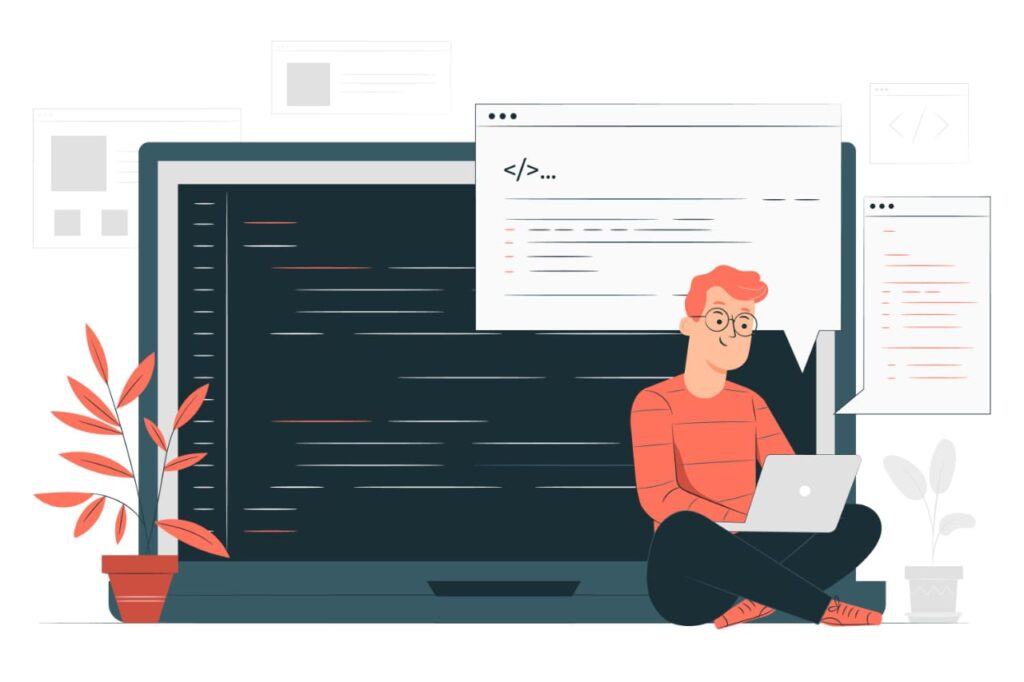
The term “vibe coding”, attributed to Andrej Karpathy in February 2025, introduces an exciting shift in AI-driven software development. Instead of laboriously crafting code line by line, developers can articulate their ideas and intentions, their “vibe”, in natural language. AI tools then take that input and automatically generate the necessary code, paving the way for quick prototyping and innovative iterations. This conversational process, akin to pair programming with a large language model (LLM), is transforming the workflow of web development and software design.
What is Vibe Coding?
Designed for simplicity and speed, vibe coding flows in a conversational prompt → generate → iterate cycle. It pushes developers into a creative flow state, which Karpathy describes as “forgetting the code even exists.” With human oversight, it becomes a rapid ideation-execution loop.
Here’s how:
- A natural-language prompt: “Create a responsive login form validation in React.”
- AI tools such as Cursor, Gemini, or Claude generate, execute, and refine code.
- Developers iteratively guide the AI: “Make the button green.” “Add error handling”
- The result: an executable prototype ready for review.
Why Businesses Are Embracing Vibe Coding
✅ Speed & Rapid Iteration
Rapid Iteration makes vibe coding ideal for MVPs and hackathons. According to Tanium, common benefits include 1-2 hours saved weekly per developer by offloading boilerplate and refactoring tasks. Enterprises like Vanguard report slashing prototyping time from two weeks to just 20 minutes using AI tools like GPT and Claude. This translates to dramatic reductions in time-to-market.
✅ Accessibility & Democratization
By lowering the barrier to entry, vibe coding empowers non-engineers—product designers, marketers, analysts—to produce tangible web development outputs through natural language code generation. Google CEO Sundar Pichai affirmed his enthusiasm for vibe coding, noting it’s delightful to code in plain English using tools like Cursor and Replit.
✅ Shift in Developer Roles
As routine code creation becomes automated, engineers are becoming architects, testers, and maintainers. CIOs forecast problem-solvers overseeing AI writing code, ensuring maintainability, security, and governance. Engineering roles will focus more on testing, QA, and validation.
The Cons, Risks & Pitfalls
❗ Code Quality & Security
Vibe coding your way to a production codebase is clearly risky. Most of the work involves evolving existing systems, where quality and understandability are crucial. It often leads developers to accept AI-generated code without fully understanding it, raising concerns over hidden bugs, insecure implementations, and maintainability issues.
❗ Technical Debt
Quick prototypes are seductive but often lack clear structure, documentation, or testing. It might work short-term, but it can eventually devolve into spaghetti code, making scaling or maintenance in a team context problematic. Many startups even end up rewriting codebases entirely.
❗ Skill Atrophy
Relying heavily on LLMs to write code could erode a developer’s understanding of algorithms, complex logic, and performance optimizations, which are crucial for building robust software. Instead of building foundational skills, beginner engineers risk learning prompts.
❗ Debugging Challenges
Debugging often involves sending error messages back, hoping for the right fix. When issues arise, it becomes an unpredictable “prompt-back” game, efficient for simple fixes but frustrating for deeper structural flaws. This feedback loop of copying error messages and refining prompts can be opaque.
🌐 Business Impact & Strategic Implications
- Gartner predicts that by 2028, 40% of new business software will originate from natural-language AI prompts.
- AI-generated code suddenly makes up over 25% of new code at Google, with Y Combinator startups reporting 95% of their code written by AI. Meta’s Zuckerberg also predicted that AI might soon function as a mid-level engineer.
- Executive champions like Sundar Pichai are advocating for it as a tool to transform workflows at all levels. Careers in prompt design, governance frameworks, and human-in-the-loop auditing will gain prominence.
- Research highlights synergy between vibe coding and next gen “agent coding,” where AI autonomously plans, generates, tests, and deploys while developers oversee.
Recommendations for Business Leaders & CTOs
- Start with prototyping: Use vibe coding for ideation, MVP stage, internal tools, and UI mock-ups, not direct production deployment.
- Enforce human review: All vibe-generated code should undergo architecture, security, QA, and documentation reviews.
- Invest in prompt engineering: Equip teams with knowledge in AI tool governance and version control to craft precise prompts.
- Minor technical debt: Apply code linters, maintain style guides, refactor early, and enforce CI/CD pipelines.
- Promote hybrid development workflows: Use vibe coding for creativity and high-level logic; switch to traditional development for critical systems.
The Verdict is Augmentation, Not Replacement
Vibe coding is no fad. It’s a powerful augmentation in the software development lifecycle that accelerates prototyping, democratizes development, and fosters experimentation. Injecting without proper oversight also risks chaos into codebases, eroding skills and compromising security.
The future is likely a hybrid development ecosystem. Vibe coding amplifies the strategic roles of seasoned developers, tantalizing speed and creativity in software innovation. To harness its full power, business and tech leaders must strike the right balance while riding the waves of AI-augmented software development.